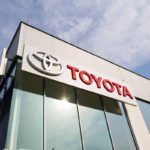Seeking Unexplored Routes to Riches, a Rising Oklahoma Agency Network Finds Its New Corporate Identity, While Doubling Its Size
Top 100 Agency Profile
Rank: No. 15
Agency Name: INSURICA Insurance Management Network
Main Office: Oklahoma City, Okla.
Additional Locations: 26
Year Founded: 1959
Total No. of Employees: 244 employees at the end of 2010; After April 2011 acquisition of Guaranty Insurance Services, 476 employees
Principals: Mike Ross, president and CEO; Gary Jarmon, executive vice president; Ed Young, chief financial officer; John Hester, vice president, mergers and acquisitions; Kevin Wellfare, vice president, marketing; Shelley Thornhill, director of colleague resources
Market Specialization: construction, education, energy, environmental, healthcare, hospitality, manufacturing, ministries, not-for-profit, staffing, technology, transportation, workers’ compensation
2010 Total P/C Premium: $454.6 million
2010 Other Than P/C Premium: $150.5 million
Total P/C Revenue: $57.8 million
If Don Draper were selling insurance, the darkly creative protagonist of television’s Mad Men would know intuitively that there was something vague and equivocal about a name like North American Group.
The man who imagined a simple round slide projector as a carousel, and even time machine, might also find a lot to like in a copywriter’s inspired choice for the hyper-capitalized replacement name: INSURICA.
Just as the Kodak Carousel’s whirling images return people to a place where they always knew they belonged, INSURICA is an undiscovered land — raw, great, and brimming with promise and potential. It is at once frontier and sophistication, Sooner wagon and moon shot. Like America itself, INSURICA thrives as not just a place, but as an idea.
For Debby Johnson, vice president of Oklahoma’s Ackerman McQueen advertising agency, one of those big ideas was strength through unity. North American Group was an aimless confederation of disparate agencies, mismatched colonies of convenience. Stitching them together under one recognizable banner was her most important vision. And so ultimately the full new name was unfurled just three years ago as the INSURICA Insurance Management Network.
In the language of creative advertising, the birth of this new property/casualty power was known as the “rebranding” initiative, which transformed the company identity, marketplace positioning and individual agency self-image.
“They came to us saying we know we need to do something, but we don’t know what we need to do,” recalls Johnson. At that time, the group was known as North American Group.
“Google ‘North American’ sometime and see how many things you come up with,” agrees John Hester, vice president for mergers and acquisitions. “The other thing that was a problem with North American is that it didn’t say ‘insurance’ anywhere.”
Johnson’s team created a handful of new names, but ultimately decided to reveal just one name to company principals.
“It was funny when they first introduced it to us, in that it was a one-word name and it wasn’t really a word,” Hester remembers.
The new brand delivered excitement and even more collaboration among members, says INSURICA President and CEO Mike Ross. “Identity within the industries we serve has dramatically grown.”
Oklahoma City Thunder
The new brand and look of this exclusive group of independent agencies not only generated excitement, but also generated tremendous growth in recent years. In April, INSURICA acquired Texas-based Guaranty Insurance Services — a deal that almost doubled the size of the organization.
With corporate headquarters in Oklahoma City, Okla., the INSURICA Insurance Management Network is a collection of constituent offices in Oklahoma, Kansas, Arizona, Arkansas, California, Oregon and Texas.
INSURICA’s roots began in 1959 with its founder C.W. Cameron. Since then, the agency has operated as a privately held independent insurance agency and remains a star in the Cameron family constellation of properties, which includes American Fidelity Assurance Co., First Fidelity Bank, real estate and even two Oklahoma basketball teams.
“We’re very proud of the private ownership and the environment and the culture that we’re able to create partly as a result of that,” says Ross, who came to the agency as a commercial lines producer more than 25 years ago.
“We’re not driven by quarterly earnings reports and shareholders meetings,” Ross says. But that doesn’t mean the agency lacks drive.
“We’re certainly driven, and we’re certainly focused on growth and profitability, but we do have the luxury of taking a longer term view, and I don’t know that any of us would give that up for what might be considered short-term advantages of being publicly traded,” he says.
“We are not at the whim of market changes as many other companies are. I think the private ownership also encourages a very strong family environment at the colleague level.”
Under Ross, INSURICA has pushed to develop specializations in construction, education, energy, environmental industries, healthcare, hospitality, manufacturing, ministries, not-for-profit organizations, staffing, municipalities, technology and transportation. At the same time, he has set multi-year goals to accelerate growth and motivate member agencies and employees.
In 1998, Ross announced an ambitious goal of achieving $10 million in annual revenues by the end of 2002. This so-called “10 by 2” plan was established at a time when profit had stalled out after two years of stagnant growth.
“The year of this announcement, our revenues were about $6 million and had been declining,” he says. “We had lost money at the bottom-line, and things did not look good. The 10 by 2 goal was bold, if not crazy at the time.”
The agency hit the goal two years early, in part because of a new acquisition strategy that had begun to yield results. Ross then set a new goal: $20 million in revenues by 2005, which was achieved by 2004. At that point, “We decided we would become even more bold in our efforts and shoot a little higher and establish 75 by 15 — $75 million by 2015.”
But Ross knows goal-setting is not enough.
“For us the key has been a simple, understandable, communicable strategy. It’s one thing to throw out bold numbers and then tell everybody just to show up to work and do what they’ve been doing and we’ll hopefully get there. It’s another thing to throw out bold numbers and then build a specific plan that supports those numbers and supports the level of activity that gets those numbers.”
New Stars for the Banner
To ensure expanding revenues in the next few years, Ross is counting on organic growth fueled by new talent and a renewed emphasis on specialization. But just as important is the company’s acquisition strategy, which has once again begun to bear fruit after a disappointing 2010.
“Last year we struck out — it was a tough year,” he says.
By this spring, however, the acquisition picture began to brighten. In April, the agency announced it was acquiring Texas-based Guaranty Insurance Services, a deal which overnight nearly doubled the size of INSURICA.
Even as it acquires new agencies and new sources of revenue, INSURICA’s manifest destiny unfolds guardedly, within a company culture that values selectivity and deliberation.
“Our pipeline has been in good shape for the last 24 months with regards to prospects,” says Hester, who became a leader at INSURICA after his own agency was acquired by the company. “The difficult part has been since we only desire quality operations, the economy and the soft insurance market has put even quality operations in a position that they’re not necessarily operating at peak performance right now, and that has made many of the sellers perhaps hesitant to go ahead and get too far into a deal.”
“10 or 12 years ago when we strategically started down the path of acquisitions, we very aggressively marketed and worked hard to develop new opportunities,” says Ross. “We still do seek opportunities, but not as broadly and as aggressively as we used to.” Now, given INSURICA’s success, opportunities seemed to come to them, Ross says.
Some of those opportunities come from investment banking firms such as Mystic Capital Advisors Group LLC, which provided advisory services for the Guaranty Insurance Services acquisition.
“Right now in some form or fashion we’ve probably got seven to eight [acquisition opportunities] that we are evaluating or working on,” Ross reveals.
Ross admits it may take evaluating 20-25 agencies before actually completing one acquisition. “The primary reason is that we’re so focused on there being a cultural fit, and so focused on finding agency partners who want to remain very involved and committed to growing their agencies,” he says. “We’re not acquiring agencies where the owner is looking to retire and cash in all his chips and call it a day.”
Hester agrees the quality and culture are critical. “We are not in the bailout business, so we are looking for quality operations that have the ability to manage themselves on a local basis,” Hester says. “We’re looking for agencies that look like us.” This includes a similar book of business, staffing and workplace environment, a high level education and training for staff, and growth oriented management.
Hester says INSURICA will remain active in acquisitions over the next five years with plans to bring in at least $5 million a year in acquisition revenue.
The INSURICAN Way
Although member agencies that become part of the network retain aspects of independence, each must cede a 51 percent ownership stake to INSURICA.
Explains Ross: “As we’ve acquired the agencies, a separate entity is established for the partner agency and INSURICA will own the majority of the ownership of that new entity, and the leadership in that agency — very often it’s the partners who owned it previously or younger managers who would be evolving into the partnership arrangement — are allowed and even encouraged to buy into a minority ownership position.”
“The fact that we allow minority ownership is unique, so when an investment banker has a prospect that wants to sell, we’re a unique opportunity for them,” says Hester. “There’s a lot of people out there who want to take some chips off the table but want to remain active in the business, want to grow their business and then sell the rest of it down the road. That’s the model that we look at.”
As head of an agency that was acquired by INSURICA, Hester experienced the process first-hand. In 1999, he began looking for ways to accelerate the growth of his agency. “It was really a size issue with the fact that at our size we couldn’t develop the resources we needed to compete as effectively as I thought we needed to compete,” he recalls. “I felt like we were good, [but] we were going to have a very difficult time ever being excellent without a larger partner.”
Hester’s agency became part of the network in 2001 and grew more than 60 percent in the first three years. Hester ultimately moved to Oklahoma City and, while still active in his own member agency, plays the lead role in finding new agencies to acquire.
“We are all under one common umbrella,” says Ross. “We are not a cluster; there is a common strategy, common direction, common focus and obviously common ownership among all of our partner agencies.”
In practical terms: “We all participate together with insurance company contracts, and we all share in the profit-sharing and contingency income that comes from the volume and the profitable efforts that we do with our insurance companies. … More importantly, the partner agencies have access at very economic levels to services, including all the technology and accounting, human resources and marketing that we manage and provide here from our corporate offices.”
Given INSURICA’s ethos of cautious deliberation, the acquisition process may at times seem like a courtship.
“There’s not a prescribed process; it’s very unique in each and every case,” Ross says. “We will spend a lot of time evaluating each other from a cultural standpoint — culture is at the top of the list. And there needs to be a fit in terms of location and size and market. We are pretty selective in what we are looking for and what fits.”
Knowns and Unknowns
Although the vast majority of INSURICA revenue comes from P/C commercial lines, the benefits segment has been one of the engines of organic growth for the agency over the past few years.
Traditionally INSURICA has placed a strong emphasis on its workers’ compensation business, especially in Oklahoma. Now, like many insurance companies across the country, INSURICA is looking at the recently enacted federal healthcare legislation with a mixture of both terror and curiosity, and working hard to figure out how to profit from it.
“What we’re already seeing is that employers are confused and frustrated,” says Ross. “The opportunity I see is that more so than ever before employers will need counselors; they’re going to need guides. And those brokers and consultants who learn how to work through the maze of the new requirements and the new system, and how to design plans for their clients at the employer level, will be handsomely rewarded because it’ll be an art.”
This is especially true for smaller companies, in which the human resource department is often a single person juggling myriad responsibilities. Even large companies are experiencing high levels of frustration and confusion over what’s to come, he adds “It is human nature to be fearful and cautious in a dark room. Our clients feel as if they are in a dark room, moving slowly and very carefully.”
Yet even as companies flounder in the metaphorical dark room, tripping over the oddly positioned mandates which clutter the new law, Ross is confident that great undiscovered opportunities for growth will emerge amid the chaos. It may take some imagination and transformation. But, in the end, seizing opportunities by bravely reinventing itself is what INSURICA does best.
Topics Profit Loss Texas Agencies Training Development Property Casualty Oklahoma
Was this article valuable?
Here are more articles you may enjoy.


 Class Action Accuses Toyota of Illegally Sharing Drivers’ Data With Progressive
Class Action Accuses Toyota of Illegally Sharing Drivers’ Data With Progressive  Progressive Insurance Is Hiring Again; 12,000 More People Needed
Progressive Insurance Is Hiring Again; 12,000 More People Needed  New Jersey Wildfire 75% Contained; Crews to Remain on Scene Until ‘Significant’ Rain
New Jersey Wildfire 75% Contained; Crews to Remain on Scene Until ‘Significant’ Rain  South Florida Insurance Broker Pleads Guilty to Fraud in $133M ACA Enrollment Scheme
South Florida Insurance Broker Pleads Guilty to Fraud in $133M ACA Enrollment Scheme 


